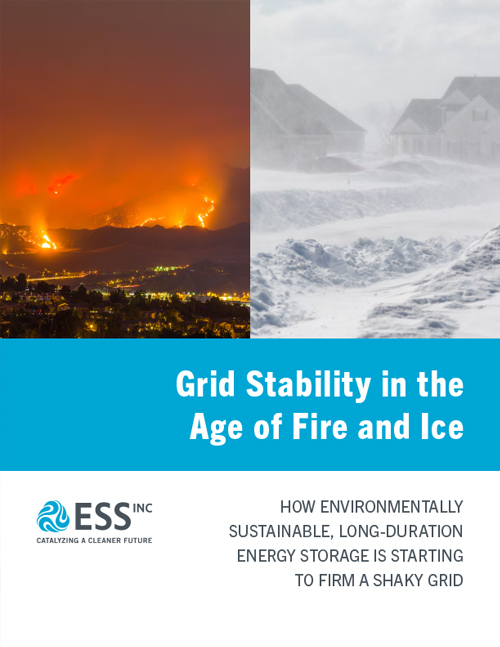As Congress was ironing out details of a trillion-dollar bipartisan infrastructure bill, power grid experts in Texas were issuing the nation a stark reminder. The difficulties plaguing the grid that left millions of people without power in early 2021 have not gone away. In fact, the Electric Reliability Council of Texas, which manages the Texas grid, reported in July that there had already been 1,280 unplanned summer outages.
Houston, we still have a reliability problem. California, which recently declared a state of emergency to prevent blackouts as firefighters contend with extreme heat and an early start to wildfire season, has a problem too. A centralized grid, once the only option, now stands in the way of reliable service for all electricity users. Long-duration storage and microgrids can provide a flexible network of distributed assets delivering the resiliency the grid needs.
At the same time, Wall Street investors have signaled a rapidly growing preference for assets that rate highly for environmental, social, and corporate governance factors. Anyone looking at lithium batteries as a long-term solution for grid stability will have to take a more expansive look at energy storage. When you do, you will see that ESS flow battery systems meet world-class ESG standards and are ready to scale – just as the market for long-duration storage is poised for exponential growth.

The paper details some of the environmental and sustainability red flags that market analysts, governments, and NGOs have raised over the extraction of raw materials used in lithium battery production and inherent risks associated with lithium batteries at the end of the product lifecycle. Mining poses an almost limitless threat to wildlife. As just one of many examples, miners plan to extract manganese, cobalt, and other battery materials from the bottom of the Pacific Ocean, possibly endangering a poorly understood deep sea ecosystem.
The paper also explores growth drivers for long-duration energy storage, use cases for batteries that can store energy for up to 12 hours, and a case study where a project developer paired ESS batteries with renewable hydropower in the Patagonia region of Chile to dramatically reduce diesel fuel consumption and costs, while ensuring a safe supply of clean energy.
Download Grid Stability in the Age of Fire and Ice to find out how ESS flow battery systems can help communities in Texas, California, and elsewhere transition to a more reliable future where we can count on electricity without putting people and planet at risk.
Links to third-party articles and/or websites are for general information purposes only and the content of any third-party article or website is solely the responsibility of the author, owner, operator or publisher of that article and/or website. Views expressed in third-party articles and/or websites reflect the opinion of the author, owner, operator or publisher as of the date of publication, and not necessarily those of ESS Tech, Inc. ESS Tech, Inc. has not independently verified such content, makes no warranties, representations or undertakings relating to such content, and bears no responsibility for the accuracy, legality or content of any external site or for that of subsequent links. Any reliance you place on such information is strictly at your own risk. You are encouraged to read and evaluate the privacy and security policies on the specific site you are entering. ESS Tech, Inc. disclaims any loss, damage and any other consequences resulting directly or indirectly from or relating to your access to the third-party website or any information you may provide or any transaction conducted on or via the third-party website or the failure of any information, goods or services posted or offered at the third-party website or any error, omission or misrepresentation on the third-party website or any computer virus arising from or system failure associated with the third-party website.
